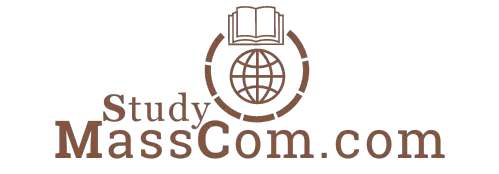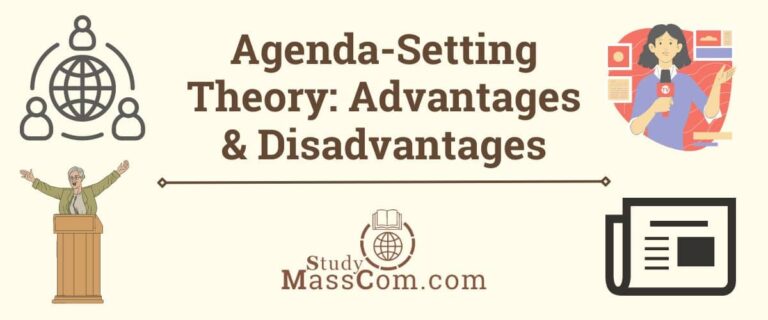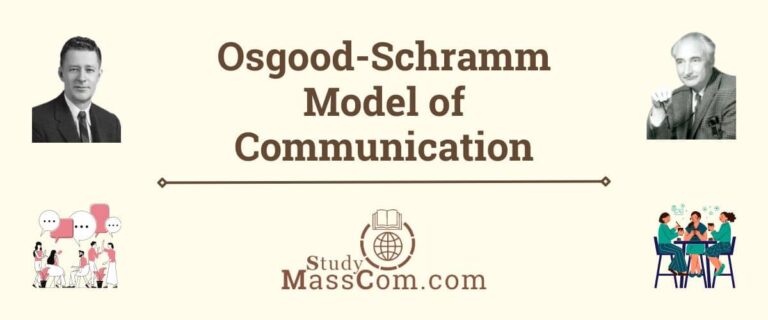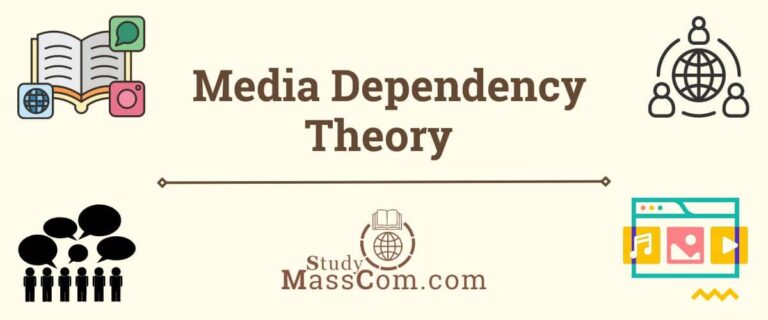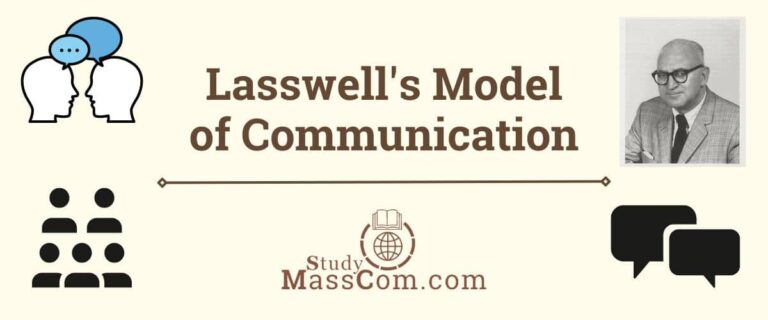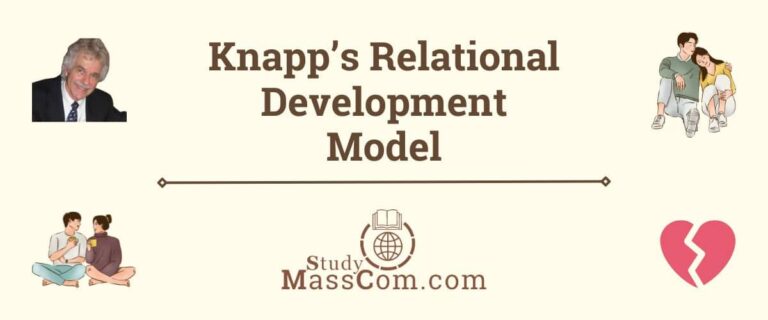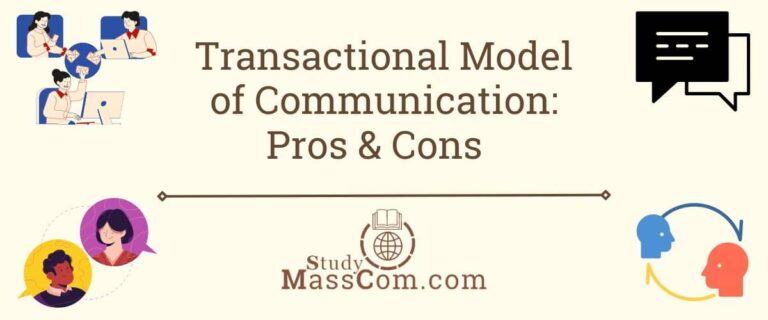Gatekeeping Theory in Mass Communication
In the realm of mass communication, the Gatekeeping Theory stands as a fundamental framework for comprehending the intricate processes involved in the dissemination of information to the public. Developed in the mid-20th century, this theory offers valuable insights into how information flows through various channels, undergoing selection, filtration, and manipulation before reaching its intended audience. Understanding gatekeeping is crucial in analyzing media dynamics, societal influences, and the shaping of public opinion.

Origins and Evolution of Gatekeeping Theory
The concept of gatekeeping emerged in the 1940s and 1950s within the field of journalism studies. Sociologists Kurt Lewin and David Manning White introduced the idea, suggesting that media professionals act as gatekeepers who control the flow of information by selecting and filtering content. Building upon this foundation, scholars such as Pamela Shoemaker and Tim Vos expanded the theory in the 1980s, emphasizing the role of individual gatekeepers within media organizations.
The gatekeeping theory evolved from a focus on newsrooms and journalistic practices to encompass a broader spectrum of mass communication channels, including social media platforms and online forums. This evolution reflects the changing landscape of media production, distribution, and consumption in the digital age.
Definition and Meaning of Gatekeeping Theory
Gatekeeping theory in mass communication refers to the process through which information flows are controlled, filtered, and manipulated by individuals or entities known as gatekeepers. These gatekeepers, which can include journalists, editors, social media moderators, and algorithm designers, make decisions about which information is selected for dissemination to the public and which is excluded. The theory explores the criteria, processes, and outcomes of these gatekeeping decisions, shedding light on how media content is shaped, framed, and prioritized. Gatekeeping theory is fundamental for understanding the dynamics of media power, audience reception, and the shaping of public opinion in various communication contexts.
Learn more about Media Dependency Theory.
Key Concepts and Assumptions of Gatekeeping Theory
At its core, gatekeeping theory revolves around several key concepts and components:
Gatekeepers
Gatekeepers are individuals or groups responsible for controlling the flow of information at various stages of the communication process. In traditional media, these gatekeepers include editors, producers, and journalists who decide which stories to cover, how to frame them, and which ones to prioritize for publication or broadcast. In the digital sphere, gatekeepers can also include social media moderators, algorithm designers, and content curators who shape the visibility of information online.
Gatekeeping Criteria
Gatekeepers rely on specific criteria to evaluate and filter content. These criteria may include factors such as newsworthiness, relevance, accuracy, timeliness, audience appeal, and editorial guidelines. Gatekeeping decisions are influenced by organizational policies, professional standards, audience preferences, and broader socio-political contexts.
Gatekeeping Processes
Gatekeeping involves a series of processes through which information passes before reaching the audience. These processes include agenda setting (deciding which topics are covered), framing (selecting how issues are presented), and priming (shaping audience perceptions through repeated exposure). Gatekeepers may also engage in censorship, bias, or manipulation, consciously or unconsciously, affecting the information flow and public discourse.
Gatekeeping Outcomes
The decisions made by gatekeepers have significant implications for the content that reaches the audience. Gatekeeping outcomes can vary in terms of diversity, accuracy, bias, and representation. By controlling the information flow, gatekeepers influence public awareness, attitudes, and behaviors, shaping the collective understanding of social issues, events, and ideologies.
What is Cultivation Theory? Learn more with us!
Diagram of Gatekeeping Theory
The following diagram illustrates the cyclical nature of gatekeeping theory, where information undergoes selection, processing, dissemination, and feedback, continuously shaping the media landscape and public discourse.

Applications and Implications of Gatekeeping Theory
Gatekeeping theory has widespread applications across various fields, including journalism, advertising, public relations, political communication, and social media studies. By examining gatekeeping processes, researchers and practitioners can gain insights into media power dynamics, audience reception, and information dissemination strategies. Additionally, understanding gatekeeping helps media professionals navigate ethical dilemmas, promote media literacy, and foster inclusive communication practices.
Journalism and News Media
In the realm of journalism, gatekeeping theory sheds light on editorial decision-making, newsroom dynamics, and media bias. Journalists act as gatekeepers by selecting, prioritizing, and framing news stories, influencing public perceptions and agendas. Understanding gatekeeping processes can help journalists maintain editorial integrity, uphold professional standards, and promote diverse representation in news coverage.
Check out the seven pillars of newsworthiness.
Advertising and Public Relations
In advertising and public relations, gatekeeping theory informs strategic communication practices aimed at influencing consumer attitudes and behaviors. Advertisers and PR practitioners act as gatekeepers by crafting messages, selecting media channels, and targeting specific audiences. By understanding gatekeeping criteria and processes, communication professionals can enhance message effectiveness, build brand credibility, and engage stakeholders ethically.
Read about the positive and negative impacts of advertising on youth.
Political Communication
In political communication, gatekeeping theory illuminates the role of media in shaping public opinion, political agendas, and electoral outcomes. Political actors and institutions seek to influence media coverage, framing, and agenda-setting to advance their interests and agendas. By analyzing gatekeeping dynamics, political analysts can assess media bias, propaganda techniques, and the impact of information manipulation on democratic processes.
Social Media and Online Platforms
In the digital age, gatekeeping theory applies to social media platforms and online forums where user-generated content proliferates. Social media companies act as gatekeepers through content moderation policies, algorithmic curation, and platform design features. Understanding gatekeeping on social media is essential for addressing issues such as misinformation, filter bubbles, and algorithmic bias while promoting digital literacy and online civic engagement.
Explore the role of New Media in public relations.
Advantages of Gatekeeping Theory
Gatekeeping theory offers several advantages in understanding the dynamics of mass communication and its impact on society. Some of the key advantages include:
Insight into Media Processes
Gatekeeping theory provides valuable insights into the inner workings of media organizations, including how information is selected, filtered, and presented to the public. By examining the criteria and processes involved in gatekeeping decisions, researchers and practitioners can better understand the editorial practices, biases, and agendas shaping media content.
Understanding Media Influence
Gatekeeping theory helps elucidate the influence of media on public opinion, attitudes, and behaviors. By studying gatekeeping processes, scholars can assess how media coverage shapes audience perceptions of social issues, events, and individuals, thereby influencing public discourse and collective understanding.
Media Literacy Promotion
Gatekeeping theory contributes to media literacy efforts by empowering individuals to critically analyze media content and recognize the role of gatekeepers in shaping information flows. By understanding how media messages are filtered and framed, audiences can become more discerning consumers of news and develop a deeper appreciation for the complexities of media production.
Ethical Considerations
Gatekeeping theory highlights ethical considerations in media production and dissemination. By examining gatekeeping practices, media professionals can reflect on issues such as bias, censorship, and representation, striving to uphold journalistic integrity, fairness, and accountability in their work.
Strategic Communication
Gatekeeping theory informs strategic communication practices in fields such as advertising, public relations, and political communication. By understanding gatekeeping criteria and processes, communication practitioners can tailor their messages, target specific audiences, and navigate media landscapes more effectively to achieve their communication goals.
Research and Analysis
Gatekeeping theory serves as a foundation for research and analysis in mass communication studies. By studying gatekeeping dynamics across different media platforms and contexts, scholars can advance theoretical frameworks, generate empirical evidence, and contribute to our understanding of media power dynamics, audience reception, and information dissemination strategies.
Overall, gatekeeping theory offers a comprehensive framework for analyzing the complex interactions between media producers, content, and audiences, thereby enhancing our understanding of mass communication processes and their societal implications.
Also, read about the pros and cons of Cultivation Theory.
Disadvantages and Criticisms of Gatekeeping Theory
Despite its utility, gatekeeping theory is not without its criticisms and limitations. Critics argue that the theory overlooks the influence of audiences, technology, and social contexts on the information flow. Additionally, the theory may not fully account for the decentralized nature of digital media platforms and the proliferation of user-generated content.
Limited Focus on Audience Agency
Critics argue that gatekeeping theory tends to overlook the active role of audiences in the communication process. The theory often portrays audiences as passive recipients of information, neglecting their ability to select, interpret, and respond to media content in diverse ways. This limitation undermines the complexity of audience engagement and participation in shaping media discourse.
Neglect of Technological Impact
Gatekeeping theory originated in an era dominated by traditional mass media, such as newspapers, radio, and television. Critics argue that the theory may not adequately account for the transformative impact of digital technologies on information dissemination. The rise of social media, online platforms, and user-generated content has decentralized gatekeeping power, challenging traditional hierarchical models of media control.
Simplistic View of Gatekeepers
Gatekeeping theory often portrays gatekeepers as monolithic entities with unilateral control over information flows. Critics argue that this portrayal oversimplifies the diverse roles, motivations, and influences of gatekeepers within media organizations. In reality, gatekeeping decisions are influenced by a complex interplay of factors, including organizational structures, professional norms, economic incentives, and ideological biases.
Assumptions of Homogeneity
Gatekeeping theory tends to assume homogeneity among gatekeepers and media organizations, overlooking variations in values, perspectives, and practices across different contexts. Critics argue that gatekeeping processes may vary significantly depending on factors such as media ownership structures, regulatory environments, and cultural norms. Ignoring these contextual differences can lead to oversimplified generalizations about gatekeeping dynamics.
Limited Predictive Power
Gatekeeping theory has been criticized for its limited predictive power in explaining media phenomena and audience behavior. While the theory offers valuable insights into the selection and framing of media content, it may struggle to account for unpredictable factors such as viral trends, algorithmic biases, and emergent forms of online communication. This limitation hinders the theory’s applicability in rapidly evolving media environments.
Underestimation of Alternative Channels
Gatekeeping theory primarily focuses on traditional mass media channels, such as newspapers, television, and radio. Critics argue that the theory may underestimate the influence of alternative channels, including social media, blogs, podcasts, and citizen journalism platforms. These alternative channels often bypass traditional gatekeeping mechanisms, enabling diverse voices and perspectives to reach audiences directly.
In conclusion, while gatekeeping theory offers valuable insights into the dynamics of mass communication, it also faces criticisms and limitations related to its focus on gatekeepers, audience agency, technological impact, contextual variations, predictive power, and alternative channels. Addressing these criticisms requires a nuanced understanding of the evolving media landscape and the complex interactions between producers, content, and audiences in contemporary communication contexts.
Explore the Uses and Gratification Theory in detail.
Future Directions in Gatekeeping Theory
Moving forward, future research directions in gatekeeping theory include:
1. Audience Agency: Exploring the role of audiences as active participants in the information dissemination process, challenging traditional notions of gatekeeping control.
2. Technological Impact: Investigating how technological advancements, such as artificial intelligence and blockchain technology, shape gatekeeping processes and media ecosystems.
3. Global Perspectives: Examining gatekeeping dynamics in diverse cultural contexts, considering the influence of globalization, digital divides, and media ownership structures.
Examples of Gatekeeping Theory in Mass Media
Gatekeeping theory manifests in various forms across different mass media platforms and contexts. Here are some examples illustrating gatekeeping dynamics in mass media:
News Media Selection and Framing
In traditional news media, gatekeeping occurs at multiple stages, from story selection to framing. Editors, producers, and journalists act as gatekeepers by determining which stories are covered, how they are framed, and which perspectives are included or excluded. For example, during a political election, news outlets may prioritize certain candidates or issues based on their perceived newsworthiness or relevance, shaping public perceptions and agendas.
Social Media Content Moderation
On social media platforms like Facebook, Twitter, and YouTube, gatekeeping takes the form of content moderation. Platform moderators and algorithm designers act as gatekeepers by enforcing community guidelines, filtering harmful or inappropriate content, and shaping the visibility of user-generated posts. For instance, social media companies may remove posts that violate their policies on hate speech or misinformation, influencing the information flow and online discourse.
Film and Television Production
In the entertainment industry, gatekeeping occurs in the production and distribution of films and television programs. Studio executives, producers, and network executives act as gatekeepers by greenlighting projects, selecting scripts, and deciding which content gets funding and distribution. For example, film studios may prioritize projects with bankable stars or commercial appeal, shaping the types of stories and representations that reach audiences.
Publishing Industry
In the publishing industry, gatekeeping occurs in the selection and promotion of books, magazines, and other printed materials. Editors, literary agents, and publishing houses act as gatekeepers by evaluating manuscripts, acquiring rights, and deciding which works receive publishing deals and marketing support. For example, literary agents may reject manuscripts that do not fit market trends or mainstream tastes, influencing the diversity of voices and perspectives in published literature.
Radio Programming
In radio broadcasting, gatekeeping occurs in the selection and scheduling of programs and music playlists. Program directors and music curators act as gatekeepers by determining which songs and shows are aired, when they are broadcast, and how they are promoted. For example, radio stations may prioritize popular or commercially successful songs, limiting the diversity of musical genres and artists that receive airplay.
Check out some of the important radio program formats and read more about them.
Online News Aggregation
In the digital realm, gatekeeping occurs in online news aggregation platforms and search engines. Aggregator websites and search algorithms act as gatekeepers by selecting and ranking news articles and websites for users. For example, news aggregation sites like Google News use algorithms to prioritize and categorize news stories based on factors such as relevance, recency, and user engagement, influencing the information consumption habits of online audiences.
These examples demonstrate how gatekeeping theory manifests across various mass media platforms, influencing the selection, framing, and distribution of content in contemporary communication contexts.
Learn more about the Agenda-Setting Theory and its advantages and disadvantages.
Conclusion
Gatekeeping theory remains a foundational framework for understanding the complex dynamics of information flow in mass communication. By examining the roles, criteria, processes, and outcomes of gatekeeping, scholars and practitioners gain valuable insights into media power dynamics, audience reception, and societal influences. As media landscapes continue to evolve in the digital age, gatekeeping theory remains essential for navigating the complexities of media production, distribution, and consumption in contemporary society.
Explore some important mass communication theories and models.
FAQs
The Gatekeeping theory was initially proposed by Kurt Lewin and later expanded upon by David Manning White in the 1940s and 1950s within the field of journalism studies. Lewin and White introduced the concept to explain how media professionals act as gatekeepers, controlling the flow of information by selecting, filtering, and prioritizing content. Their work laid the foundation for subsequent developments in gatekeeping theory, with scholars such as Pamela Shoemaker and Tim Vos further elaborating on the role of individual gatekeepers within media organizations in the 1980s.
Gatekeeping in mass communication refers to the process through which information flows are controlled, filtered, and manipulated by individuals or entities known as gatekeepers. These gatekeepers, such as editors, producers, social media moderators, and algorithm designers, make decisions about which information is selected for dissemination to the public and which is excluded. Gatekeeping involves evaluating content based on criteria such as newsworthiness, relevance, accuracy, and audience appeal. It influences the types of stories that are covered, how they are framed, and which perspectives are included or omitted, ultimately shaping public discourse and perceptions of reality.
The function of gatekeeping in mass communication is to control the flow of information by selecting, filtering, and shaping content before it reaches the audience. Gatekeepers, such as editors, producers, and social media moderators, play a crucial role in deciding which stories are covered, how they are framed, and which perspectives are included or excluded. By applying criteria such as newsworthiness, relevance, accuracy, and audience appeal, gatekeepers influence the types of information that are disseminated to the public, shaping public discourse, perceptions, and agendas in the process.
